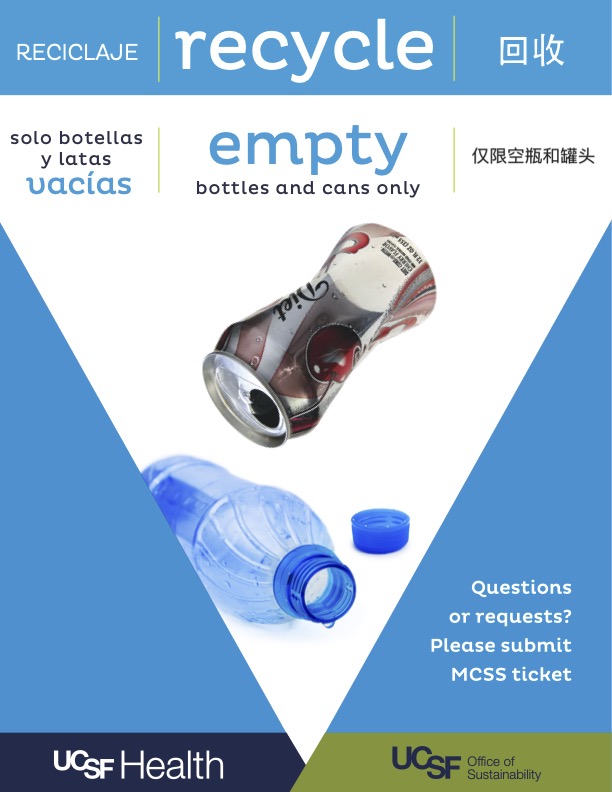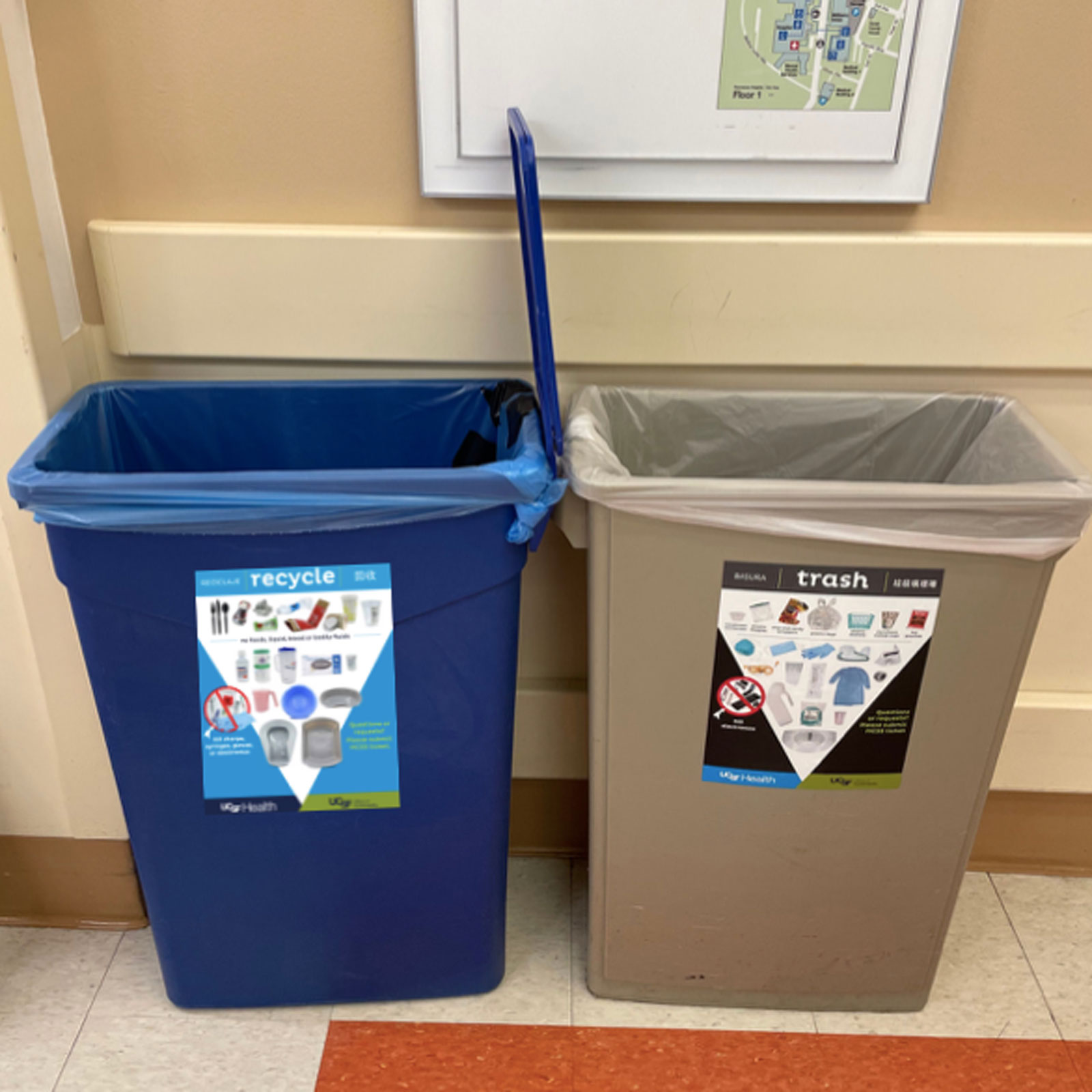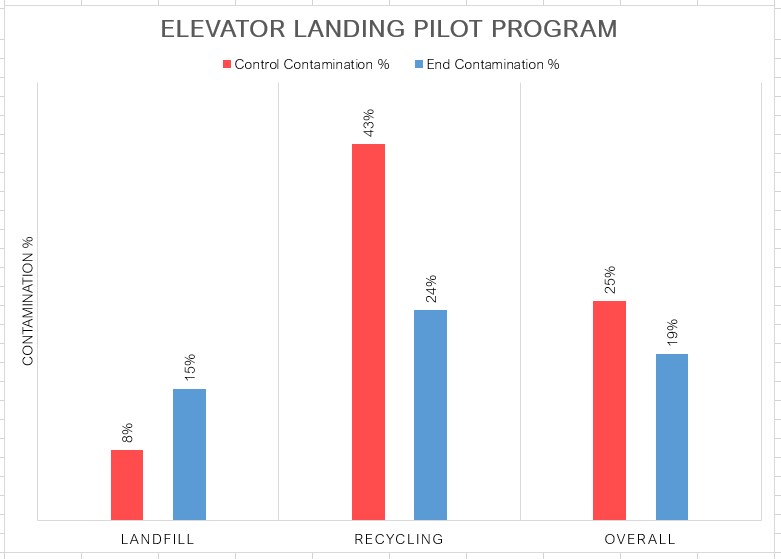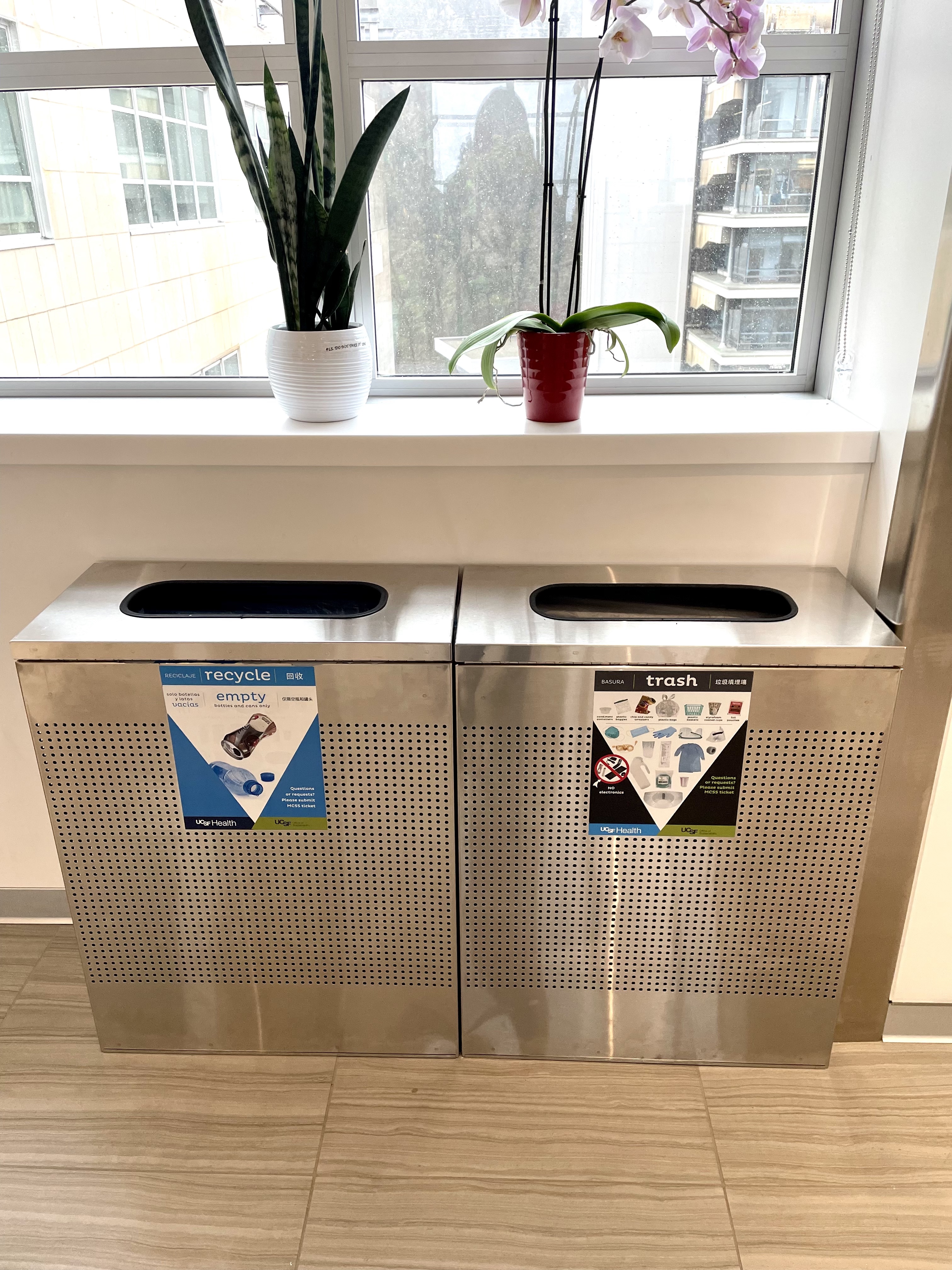Written by Mikayla White.
Excessive waste contamination and improper sorting result in monthly $7,000 fines for the UCSF Medical Centers. The City of San Francisco's maximum allowable waste contamination is 25% for landfill, 10% for recycling, and 5% for compost. The contamination of the recycling stream is the primary cause of these fines.
The main issue preventing higher diversion of waste is that the general public does not know how to sort. The public spaces at UCSF Health, such as the elevator landing areas, are challenging to implement and maintain proper waste sorting, as hosting training sessions cannot reach the scope of patients, visitors, or vendors who frequently navigate those spaces. These public spaces are very fluid, and there is no way to trace who is responsible for improper waste sorting.
The Research
 New custom signs.
New custom signs.
To address the waste contamination around the elevator landing areas, the UCSF Health Office of Sustainability set up a pilot program at the Parnassus medical center. The program limited recycling to empty bottles and cans by adding new custom signage and lids with just two small circular openings.
The bottles and cans-only strategy was selected for a few reasons. Limiting recycling to only bottles and cans will reduce confusion about if other plastics or paper products are recyclable, decreasing contamination. Simplifying the signage to minimal words and pictures (just bottles and cans instead of listing all acceptable items) increases the understandability, as well as the likelihood that the signs will be read. A smaller circular opening on the lids will make people think about sorting while they are tossing waste, regardless of whether or not they read the signage.
Before:

After:

The Results
The elevator landing pilot program consisted of waste audits before and after adding the new recycling lids and signs. The control audits showed that the contamination of the recycling stream was 43%, the contamination of the landfill stream was 8%, and overall contamination was 25%. After adding the new signs and lids, the contamination of the recycling stream dropped to 24%, the contamination of the landfill stream changed to 15%, and overall contamination dropped to 19%. Although the recycling contamination didn’t drop to the City of San Francisco’s goal of 10%, a drop to 24% from 43% is still very impressive. Landfill contamination was expected to increase, as the pilot program limited the acceptable recyclables items, causing other recyclables to go to the landfill bins. Since overall contamination dropped from 25% to 19%, adding new signage and lids proved to be effective in reducing waste stream contamination.


When identifying what items contribute to contamination, the control audits showed that the landfill had 64 instances of bottles, cans, or cups before adding the new lids and signs. After adding the changes, the landfill had 59 instances of bottles, cans, or cups. This indicates that instead of capturing more bottles and cans from the landfill bin, the new lids and signs helped to keep landfill items out of the recycling. The end audits showed that the remaining 24% of contamination in the recycling bins is primarily made up of paper towels, PPE, and plastic film. Those were the main contributors to recycling contamination in the control audits as well, signaling that the contamination results from people tossing waste without reading the signs or stopping to think about sorting.
Studying the results, some factors could’ve restricted the pilot program’s success. For example, some hospital floors place bins in medal casings, which prevents lids from being added. When looking at the change in contamination percentages sorted by bin type, we saw that recycling bins with metal casings dropped from 50% to 43%, versus the bins that were able to have lids added (in this case slim jim bins) dropped from 53% to 27%. These results indicate that metal casings hinder improvements in waste stream contamination rates, as the change in contamination percentages was less than the slim jims with lids.

When considering what types of bins are best for recycling in spaces where staff training is not possible, our pilot program shows that slim jims with bottle and can lids and custom signage are the best option for contamination reduction.